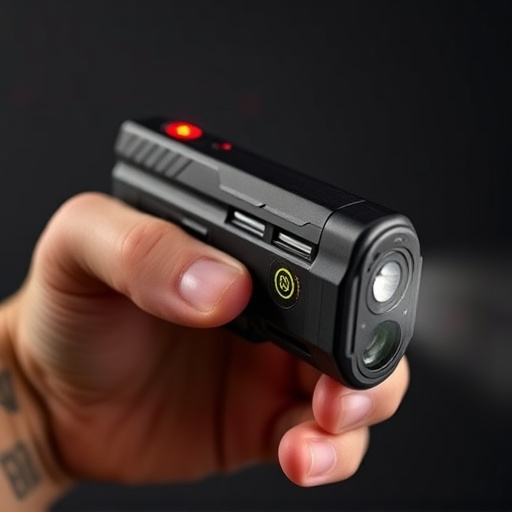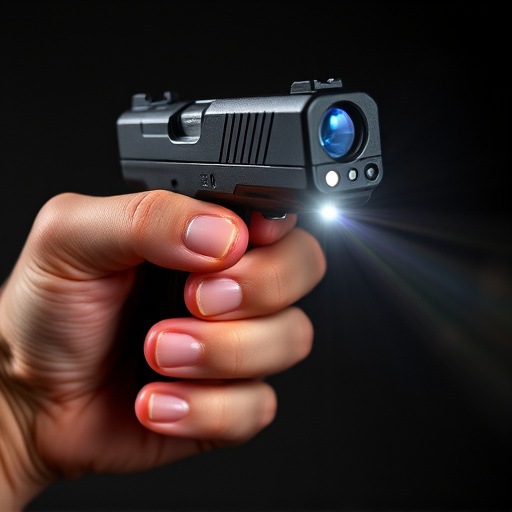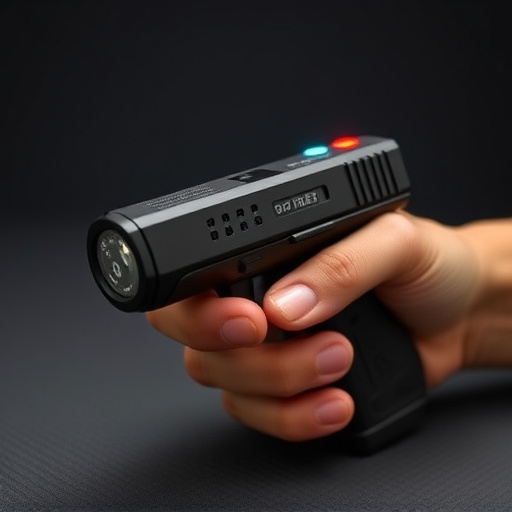Slider stun guns' effectiveness and longevity hinge on electrical pulse frequency, with higher frequencies enhancing stunning power but taxing batteries. Adjustable settings allow users to tailor intensity for safety and practicality. Key factors influencing performance include circuit design, power source, and environmental conditions, while size considerations balance efficiency with advanced features. Stung gun safety and regulation are paramount, requiring updated guidelines and managing collateral damage risks through licensing to ensure responsible use.
“Uncover the power behind stun guns with our comprehensive guide to electrical pulse frequency. ‘Understanding Electrical Pulse Frequency: The Basics’ delves into the fundamental principles, while ‘How Slider Stun Guns Utilize Pulse Frequency’ explores their innovative application. We dissect ‘Factors Influencing Pulse Frequency’ and ‘Safety Considerations’ to ensure informed use. Discover the technology’s regulatory landscape and stay ahead with our expert insights on slider stun guns.”
- Understanding Electrical Pulse Frequency: The Basics
- How Slider Stun Guns Utilize Pulse Frequency
- Factors Influencing Pulse Frequency in Stun Devices
- Safety Considerations and Regulatory Aspects of Stun Gun Technology
Understanding Electrical Pulse Frequency: The Basics

Electrical pulse frequency in stun guns, such as the slider stun gun, is a fundamental aspect that determines its effectiveness and safety. Stun devices emit electrical pulses through electrodes, temporarily paralyzing muscles and causing intense pain. The frequency refers to the number of these pulses delivered per second, measured in Hertz (Hz).
A higher pulse frequency generally results in more rapid muscle disruption, leading to quicker and stronger stunning effects. However, it also increases power consumption, making longer durations less feasible. Slider stun guns, known for their innovative design, often offer adjustable frequency settings, allowing users to balance effectiveness with battery life. Understanding this dynamic is crucial when selecting a stun gun, ensuring the device meets both safety and practical needs.
How Slider Stun Guns Utilize Pulse Frequency

Slider stun guns operate on a unique principle that involves precise electrical pulse frequency to deliver a powerful yet safe shock. These devices utilize high-voltage, low-current electric pulses, typically generated at specific frequencies, to incapacitate an attacker temporarily. The slider mechanism controls the intensity and duration of these pulses, allowing for adjustable levels of force. By varying the frequency, stun gun manufacturers can optimize the impact on the target’s nervous system while minimizing collateral damage to surrounding tissues.
The pulse frequency in a slider stun gun is designed to disrupt muscle control and cause severe discomfort or paralysis. This effect is achieved through rapid electrical impulses that interfere with nerve signals, leading to muscular spasms and loss of balance. The slider design enables users to select the appropriate setting based on their level of comfort and the perceived threat, ensuring they have control over the force applied. This feature makes stun guns a popular choice for personal defense, as it offers a non-lethal option with customizable power levels.
Factors Influencing Pulse Frequency in Stun Devices
The pulse frequency of a stun device, like a slider stun gun, is influenced by several factors. One key factor is the type of circuit used in its design. Different circuits can generate varying frequencies, with some models employing advanced technologies to achieve higher or lower pulses for enhanced effectiveness and user safety. Another important aspect is the power source; rechargeable batteries, for instance, allow for more adjustments in frequency compared to single-use alternatives.
Additionally, environmental conditions play a role. Temperature fluctuations can impact the performance of electronic components, potentially affecting pulse frequency stability. Moreover, the physical design and size of the stun gun also contribute; compact models might prioritize efficiency over frequency variations, whereas larger devices may offer more room for advanced features that enable precise control over pulse settings.
Safety Considerations and Regulatory Aspects of Stun Gun Technology

The safety considerations surrounding stun guns, especially slider stun guns, are paramount due to their direct impact on human health and well-being. These devices emit electrical pulses at high frequencies, typically ranging from 100,000 to 400,000 Hertz (Hz). While this technology is designed to incapacitate without causing serious harm, the potential for collateral damage exists, especially with improper use or when targeting sensitive areas of the body. Regularly updated safety guidelines and manufacturer instructions are crucial to ensure users understand the risks and implement best practices.
Regulations play a vital role in ensuring stun gun technology is utilized responsibly. Different jurisdictions have varying legal frameworks governing stun guns, with some completely prohibiting their civilian possession while others allow it under strict conditions. For instance, slider stun guns often require specific licenses or permits due to their potency and the potential for misuse. Regulatory bodies must strike a delicate balance between enabling responsible self-defense and maintaining public safety by setting clear guidelines and enforcing them rigorously.
Slider stun guns operate by emitting precise electrical pulse frequencies, a key factor in their effectiveness. Understanding these pulses—how they’re generated and the factors that influence them—is crucial for both ensuring safety and making informed choices in self-defense technology. As stun gun technology evolves, continued research and responsible regulatory practices will play a vital role in enhancing their safety and reliability, empowering folks to protect themselves effectively in today’s world.
